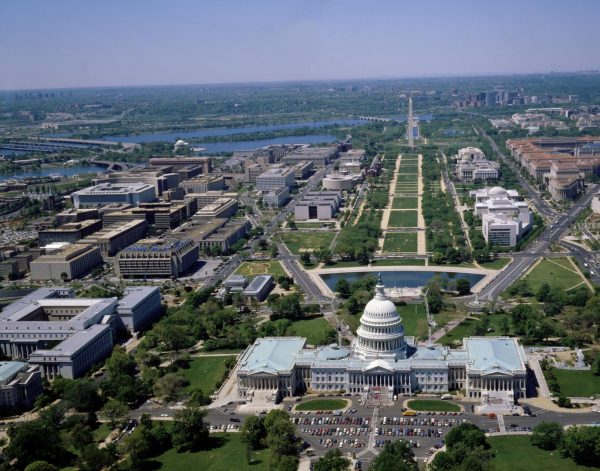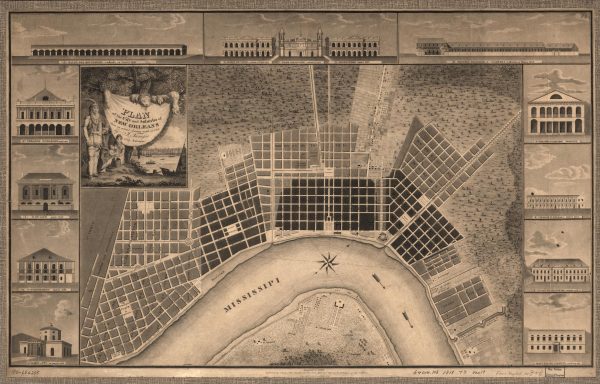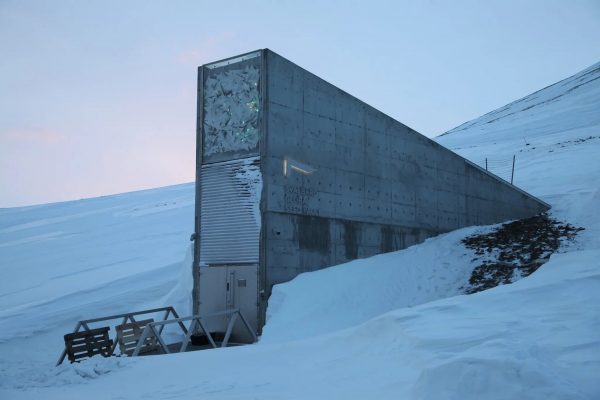A Message from the SHA President
Dear Colleagues:
I am writing to you at a challenging time for historical archaeology. As you know, the Society for Historical Archaeology is an international organization dedicated to promoting scholarly research and the dissemination of knowledge concerning historical archaeology. We also advocate for the ethical practice of historical archaeology, and we are committed to diversifying the practice of historical archaeology and providing a welcoming home for all archaeologists. Many of us are employed in cultural resource management, by federal agencies, and in the academy. The recent spate of executive orders has created a number of challenges for our discipline, regardless of our place of employment.
For those of us in the academy, the Department of Education’s Dear Colleagues letter of February 14 (https://www.ed.gov/about/news/press-release/us-department-of-education-directs-schools-end-racial-preferences), provides a particular interpretation of a 2023 Supreme Court ruling and argues that DEI activities are discriminatory. A number of states’ attorneys general have challenged the letter (https://www.mass.gov/doc/multi-state-guidance-concerning-diversity-equity-inclusion-and-accessibility-employment-initiatives/download). This issue will, no doubt, be adjudicated in the courts. Universities saw Pell Grants briefly paused, and have lost funding as federal grants have been paused or cancelled. The Society for Historical Archaeology remains committed to research on the myriad topics that fall under the heading of historical archaeology. We are also committed to diversity in all forms and will continue to work to diversify our membership and provide a supportive environment for all of our members.
Federal agencies have seen probationary employees dismissed, long-term employees asked to justify their work, and seasonal positions terminated. We are profoundly concerned by these attacks on our colleagues who strive diligently to protect and interpret our shared cultural heritage. The Society for Historical Archaeology recently joined our sister organizations, the SAA, AAA, and ACRA in protesting the USDA/Forest Service laying off of cultural resources/archaeological staff.
Laws that underpin the practice of cultural resource management in the United States are also under fire. Changes have been proposed to the Antiquities Act of 1906, our oldest piece of preservation legislation, which challenges the President’s authority to designate National Monuments. Equally concerning, Secretarial Orders (SO) 3417 (Addressing the National Energy Emergency) and 3418 (Unleashing American Energy) speak to reducing government regulation with the goal of increasing energy development on federal lands. SO 3418, specifically notes that department and agency leaders should “review all relevant internal regulations, policies, and guidance to ensure the lawful implementation of Section 106 of the National Historic Preservation Act.” The Society for Historical Archaeology joined the SAA, AAA, and ACRA in protesting these secretarial orders: https://documents.saa.org/container/docs/default-source/doc-governmentaffairs/final_secretarial_order_statement.pdf?sfvrsn=634a9f2c_3
The Society for Historical Archaeology is committed to advocating for the maintenance of the laws that protect our shared heritage. We remain committed to an inclusive historical archaeology, and we support our colleagues whose research or employment has been impacted by recent executive orders. We are actively monitoring the evolving political landscape in order to assess and respond to issues that affect our discipline and we are in regular communication with our sister organizations, the SAA and ACRA. We encourage members to share their concerns with their elective representatives as we work collaboratively to support the practice of historical archaeology in the United States and beyond.
Sincerely,
Richard F. Veit, Ph.D.
President, Society for Historical Archaeology
Archaeology of Learning in the Little Ice Age

Sissarluttoq, just southwest of the Inuit settlement of Igaliku, contains some of the best-preserved Norse ruins in Greenland. Photo by Ciril Jazbec, published in Folger, Tim (March 2017), Why Did Greenland’s Vikings Vanish? Smithsonian Magazine, https://www.smithsonianmag.com/history/why-greenland-vikings-vanished-180962119/, accessed Feb. 11, 2025.
By Marcy Rockman, Lifting Rocks Climate and Heritage Consulting, for the SHA Climate Heritage Initiative
Greenland and the US Dept. of Education have been in the news recently, linked by expressions of intent from the US executive for acquisition and dismantling respectively. But new archaeological research has brought together evidence of a deeper bond between the Arctic nation and teaching of children, providing a critically useful view of how different approaches to learning can support or undermine adaptation to a changing climate.
The researchers have brought together multiple lines of evidence – artifacts, history, and ethnographic information – that they use to compare childhood learning practices between the Norse Viking and Inuit communities of medieval Greenland (10th-15th centuries CE). In short, they’ve built an archaeology of toys. This shows that for the Norse, childhood learning was instructional, structured by age, and focused on routines of farms, with a notable absence of play related to wild resources and hunting. For the Inuit, childhood learning followed a learn-by-discovery approach, with children observing and exploring adult activities from an early age and few discernible boundaries between nature and culture.
Climatic fluctuations now known as the Little Ice Age began in the 13th century. Storm patterns and Icelandic volcanic eruptions stretched conditions in Greenland outside those under which the Norse settlements – and their teaching traditions – had been established. Many factors contributed to the end of the Greenland Norse settlements in the 15th century. But the contrast with the Inuit, whose skills and teaching attended to the whole of their environment and tracking of change, and who comprise approximately 90% of the population of Greenland today, is one to consider deeply.
We are now at a point climatically where the past is not a guide to future conditions. But the archaeology of toys is a small powerful reminder that how children learn how to learn their environments can have outcomes across generations.
Featured Link: https://www.sciencedirect.com/science/article/pii/S0959378024000827
The views and opinions expressed in this blog post are solely those of the author and do not necessarily reflect the official policy, position, or opinions of the Society for Historical Archaeology.
For a listing of all blog posts in this series, visit our Climate Heritage Initiative page.
Finding Federal Climate Heritage

President Jimmy Carter at a dedication ceremony for the White House solar array on June 20, 1979 (photo source: Bill Fitz-Patrick/Jimmy Carter Presidential Library and Museum/NARA, published as part of the featured link below).
By Marcy Rockman, Lifting Rocks Climate and Heritage Consulting, for the SHA Climate Heritage Initiative
In 2012, as the Obama administration was stepping up its attention to climate change, I was advised to come up with an idea to have in my “back pocket” if the Secretary of the Interior wanted to do something splashy, something high profile but also, hopefully, meaningful. At the time, I was serving with the National Park Service as Climate Change Adaptation Coordinator for Cultural Resources. The idea I came up with was to designate the Mauna Loa Observatory (MLO) as a National Historic Landmark. MLO is where in 1958 Charles Keeling began collecting direct measurements of carbon dioxide concentrations in the atmosphere. His graph of these measurements, the Keeling curve, has become one of the most widely recognized and referenced sources of information about how humans are changing the composition of the atmosphere. NOAA, which manages MLO, was interested, on the provision that such designation would not interfere with ongoing monitoring at MLO and updates to the facility as needed. In the end, no request came and work on the designation didn’t go forward.
What heritage does is ground us in how the present came to be and remind us of other ways of being. As current challenges mount against NOAA and other US federal agencies, climate heritage- places, artifacts, and knowledge that track the history of the identification of modern anthropogenic climate change and efforts to address it- may be more important than ever. MLO is vital for its data now and its decades-long vision. So too are the solar panels President Carter installed on the roof of the White House in 1979 (featured link). Removed in 1986, the panels have continued on and dispersed widely, physical traces of different ideas. As with all heritage, what happens next with these legacies is up to us.
Featured Link: https://www.nytimes.com/2025/01/02/climate/jimmy-carter-solar-panels.html?unlocked_article_code=1.rE4.uyy3.TI9lLdGnIIGn&smid=url-share (gift link)
The views and opinions expressed in this blog post are solely those of the author and do not necessarily reflect the official policy, position, or opinions of the Society for Historical Archaeology.
For a listing of all blog posts in this series, visit our Climate Heritage Initiative page.
Invisibility Cloaks Do Not Protect

Aerial view from above the U.S. Capitol, looking west along the National Mall, Washington, D.C. [Between 1980 and 2006] by Highsmith, Carol M, photographer. Retrieved from the Library of Congress, www.loc.gov/item/2011635416/, January 30, 2025.
By Marcy Rockman, Lifting Rocks Climate and Heritage Consulting, for the SHA Climate Heritage Initiative
Last week’s White House-led freeze on US federal funding has been halted – for now. Its stated targets were “Marxist equity, transgenderism, and green new deal social engineering policies” (featured link below). It feels important to point out here – programs for cultural resources, heritage, and archaeology were on the list for review.
Rapid reporting by Heatmap News (featured link) on climate and energy impacts of the freeze shared a list of targeted programs from the Office of Management and Budget. At the Dept. of Interior, these included Historic Preservation Fund Grants-In-Aid, the Historic Preservation Tax Incentive, Save America’s Treasures, and apparently the Cultural Resources Program of the National Park Service and work in compliance with the Native American Grave Protection and Repatriation Act. Other listed programs included Cultural Antiquities Task Force at the State Dept. and cultural resources monitoring by Dept. of Energy.
With respect to management of cultural heritage, the US is distinct from most other countries in not having a named heritage ministry. Rather, the National Park Service, most widely associated with large parks known for their scenery, is assigned as the lead for cultural resources and direct management is distributed across agencies that hold land and property (source). Over recent years, some colleagues have defended this structure to me, arguing that such “hiding” of cultural resources protects them from cuts. The programs on the targeted list should be our evidence that it does not.
Across the Arctic, archaeologists are raising the alarm that the long-standing practice of leaving sites in situ is not protecting them from damage from melting permafrost, that new methods of management and care are needed. This is now a powerful metaphor for US federal structures for cultural resources – as these new forces of erosion emerge, how do we want to address them?
Featured Link: https://heatmap.news/politics/trump-memo-climate-programs
The views and opinions expressed in this blog post are solely those of the author and do not necessarily reflect the official policy, position, or opinions of the Society for Historical Archaeology.
For a listing of all blog posts in this series, visit our Climate Heritage Initiative page.
Look for the Helpers

Alta Heritage Foundation archaeologists Alex DeGeorgey and Mike Newland working on recovery at a homesite in Santa Rosa, CA in 2018 (source: https://www.npr.org/2018/02/03/582462990/forensic-search-dogs-sniff-out-human-ashes-in-wildfire-wreckage, accessed January 21, 2025).
By Marcy Rockman, Lifting Rocks Climate and Heritage Consulting, for the SHA Climate Heritage Initiative
To start- if you’ve lost your home in a wildfire and it held cremains that you weren’t able to take with you- contact the Alta Heritage Foundation (Alta). They’re archaeologists who have developed methods of recovering cremains from the ashes of homes. They are a non-profit, and recovery is done at no cost to the people or households affected.
Alta began their work with cremains recovery in 2017 after the Tubbs Fire swept through neighborhoods in Santa Rosa, CA. Wildfires have always had power to destroy; under current climate conditions, they are moving faster and burning hotter, leaving less time for people to gather what matters and more fully incinerating what is left behind, including urns holding ashes of loved ones. In years since, Alta has worked with more than 300 households following other fires in California and Oregon, and they are now mobilizing for the recovery from the January 2025 fires around Los Angeles.

Post shared by Alta Heritage Foundation on social media as the January 2025 LA fires developed.
Archaeology and heritage fit awkwardly in most descriptions of disaster. Life and safety come first, but where and how do we talk about other forms of meaning and gaps made by their loss? Lists of architectural heritage burned in the Palisades and Eaton fires note this discrepancy and that value for heritage is often most recognized once it’s gone.
Work Alta is doing is a different connection of heritage and climate Their focus is not objects or data from the past, but rather using the people and skills of archaeology to meet new challenges climate-accelerated disasters are bringing. US television personality Mr. Fred Rodgers is often quoted as saying that when he was young and saw scary things, his mother would tell him “Look for the helpers. You will always find people who are helping.” In the devastation climate fires are creating, Alta is helping.
_____
This blog post re-launches Micro-Climate, a project of the Society for Historical Archaeology’s Climate Heritage Initiative which brings an archaeological and heritage perspective to a current piece of climate news in 300 words or less, for 2025. Due to budget constraints, the Micro-Climate schedule has been reduced to one post per week. An introduction to the Climate Heritage Initiative is here and an archive of all Micro-Climate posts from 2024 can be found here.
For a listing of all blog posts in this series, visit our Climate Heritage Initiative page.
A Global Community for Landscapes in Transition

Plan of the city and suburbs of New Orleans: from an actual survey made in, by Tanesse, I, et al. 1815 (New York: Charles Del Vecchio ; New Orleans: P. Maspero). Retrieved from the Library of Congress, www.loc.gov/item/90684205/, November 24, 2024.
By Marcy Rockman, Lifting Rocks Climate and Heritage Consulting, for the SHA Climate Heritage Initiative
A recent global-scale survey by the UN Development Program (UNDP) found that far more people around the world want action on climate change than those that don’t. Eighty-six (86) percent want their governments to work together on climate despite differences on other issues, more than 50% think about climate change daily or weekly, and similarly high percentages want stronger protections for nature and higher commitments to reduce greenhouse gas emissions.
Such survey results matter because individual action on climate has the most impact when it is aggregated and collective action becomes more possible as individuals hear and feel that others share their concerns and also want to take action. A recent study of climate engagement by scientists found that a vast majority of scientists surveyed are deeply concerned about climate change and most see need for fundamental change to social, political, and economic systems and do not agree that technology will provide all or most solutions. However, many are also unsure of how to balance their roles as scientists with meaningful action.
This is why it is important and fitting that in early January 2025, the Society for Historical Archaeology, in partnership with the Advisory Council on Underwater Archaeology, will host its annual conference with the theme Landscapes in Transition. The land of the host city of New Orleans has been home to many peoples over thousands of years. This land is now sinking, shifting, and rebuilding in response to fossil fuel development, storms and rising sea levels, and ongoing human connections to and love for this place. Accordingly, the conference will link archaeology with climate change in many ways, from study of impacts on sites and plastics to community-based archaeology and discussions of policy, collectively showing that archaeologists recognize the challenges of climate and are working together on it.
With this post, the Micro-Climate Blog will pause to prepare for and take part in this conference, with plans to resume in mid-January.
Featured Link: https://sha.org/wp-content/uploads/2024/09/SHA-2025-Conference-Preliminary-Program.pdf
For a listing of all blog posts in this series, visit our Climate Heritage Initiative page.
Saving Seeds But Not Yet Sites

Entryway to the Svalbard Seed Vault in northern Norway (photo by Steffen Trumpf/Picture Alliance, via Getty Images, published at featured link below).
By Marcy Rockman, Lifting Rocks Climate and Heritage Consulting, for the SHA Climate Heritage Initiative
In late October of this year, the Svalbard Seed Vault in northern Norway received its largest deposit to date, approximately 30,000 new samples. The Seed Vault is a gene bank, holding seeds from around the world against a range of catastrophes, including climate disasters and other human-caused events. In this way it’s safeguarding genetic heritage of the world’s plants and millennia of agricultural development. The Seed Vault is the outcome of a powerful vision and wide collaboration. It also raises the question – what visions and plans are underway for cultural heritage of seeds and growth?
There are multiple seed gene banks around the world that store, study, and share seeds. While some withdrawals have been made, the Svalbard Seed Vault has been likened to an external hard drive, the back-up in case regularly used systems of seed stewardship fail. The size of the October deposits is a reflection of the growing recognition of the growing stresses of climate change.
The Arctic is warming, up to four times as fast as other areas of the planet. This warming caused a small flood at the Vault several years ago; this is now fixed, but archaeological sites across the Arctic do not have similar protections. They’re melting along with the permafrost that holds them. There is much to say about impacts of climate on archaeological sites everywhere, and the long-standing crisis at curation facilities struggling to hold what has been excavated previously. But keeping with the theme of seeds, I’ll note that media attention to saving of seeds, which is needed!, most often does not recognize the cultural knowledge that surrounds seeds: tools and care for growing them, recipes that have used them, language and songs that have carried these forward.These too should be part of what we plan for.
For a listing of all blog posts in this series, visit our Climate Heritage Initiative page.
Signing Climate Change and Heritage

A portion of the British Sign Language sign for “carbon footprint,” full video for the sign on YouTube.
By Marcy Rockman, Lifting Rocks Climate and Heritage Consulting, for the SHA Climate Heritage Initiative
An array of new signs has been added to British Sign Language (BSL) to convey climate change and associated issues such as greenhouse gasses, tipping points, and sustainability. Each is a creation that is more than finger spelling or compilations of previously developed signs; rather, this new vocabulary incorporates motions that convey the essence of what is happening or envisioned. This raises some great questions about how to sign connections of archaeology/heritage and climate change.
For example, “carbon footprint” begins with the left hand forming a “C” shape to represent carbon, while the right hand moves away from the “C” to mimic the release of carbon into the atmosphere. This movement of the right hand gives the term flexibility, rapid upward movement of the right hand indicates high emissions from an activity and a slower downward movement means lower emissions (all new terms are illustrated in the featured link).
Inspired by this, I looked up signs for archaeology, history, and heritage. In American Sign Language (ASL), signs for archaeology are combinations of motions for digging, scraping with a trowel, and a motion that suggests time or walking. History is an “H” finger sign moving up and down twice. Heritage is a rolling motion made with both hands moving either away from the body or in towards it.
Over recent years “climate heritage” has come into use to describe connections of archaeology, history, heritage, and climate To date, there isn’t yet a sign for “climate heritage” in ASL or BSL. Which raises the question: what would we like a sign for climate heritage to share? Practical action, such as a digging motion combined with a rising flat palm to convey sea level rise? Or vision, such as an “H” combined with movements around a world then a lowering of emissions?
Featured Link: https://theconversation.com/how-we-developed-sign-language-for-ten-of-the-trickiest-climate-change-terms-242254
For a listing of all blog posts in this series, visit our Climate Heritage Initiative page.
Rewilding and Relearning in Ireland and Elsewhere

Eoghan Daltun on his farm in West Cork, Ireland, which he is rewilding into a temperate rainforest (photo by Paulo Nunes dos Santos for The New York Times, published at featured link below).
By Marcy Rockman, Lifting Rocks Climate and Heritage Consulting, for the SHA Climate Heritage Initiative
Efforts are underway to rewild Ireland. While Ireland is known for the abundant and green vegetation its rainfall supports, recent assessments are showing this lushness is not equivalent to biodiversity and ecosystem health. Some rewilding work is now underway to try to address this.
The threads I want to pull from this here are those of shifting baselines and how deep histories of human experience and emotion are interwoven with our understandings and perceptions of how environments can work and what it can mean to live with them. As the featured article notes, English colonization saw forests, bogs, and wild fauna in Ireland as elements to be subjugated – along with its people, a value system and process later followed as well in the Americas. In Ireland, this dispossession is linked to fierce attachment to the land, but the hardships it engendered in turn led to further pushing out of nature in order to survive with farming.
The concept of wilderness has been, since the mid-later 19th century, as eloquently outlined by environmental historian William Cronon, focused on nature as being where humans are not and have not been. Knowledge of Indigenous peoples around the world and the archaeological record across millennia show that there are few places that meet this criteria. Rewilding as developed here reflects this, as do several other recent books (English Pastorale, by James Rebanks in the English Lake District, The Book of Wilding by Isabella Tree and Charlie Burrell in Sussex, England). In these, rewilding is not about creating new places where people are not, but relearning ways to live within a range of environments in ways that try to move beyond these histories of dispossession and values that created them.
If you know of books on rewilding work in the US, please let me know.
Featured Link: https://www.nytimes.com/2024/10/18/climate/ireland-ecological-desert-rewilding.html?unlocked_article_code=1.Y04.r3oA.bqjGSeiS6Sd1&smid=url-share (gift link)
For a listing of all blog posts in this series, visit our Climate Heritage Initiative page.




